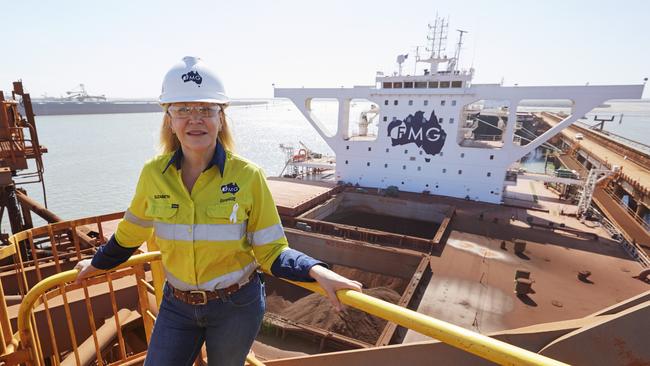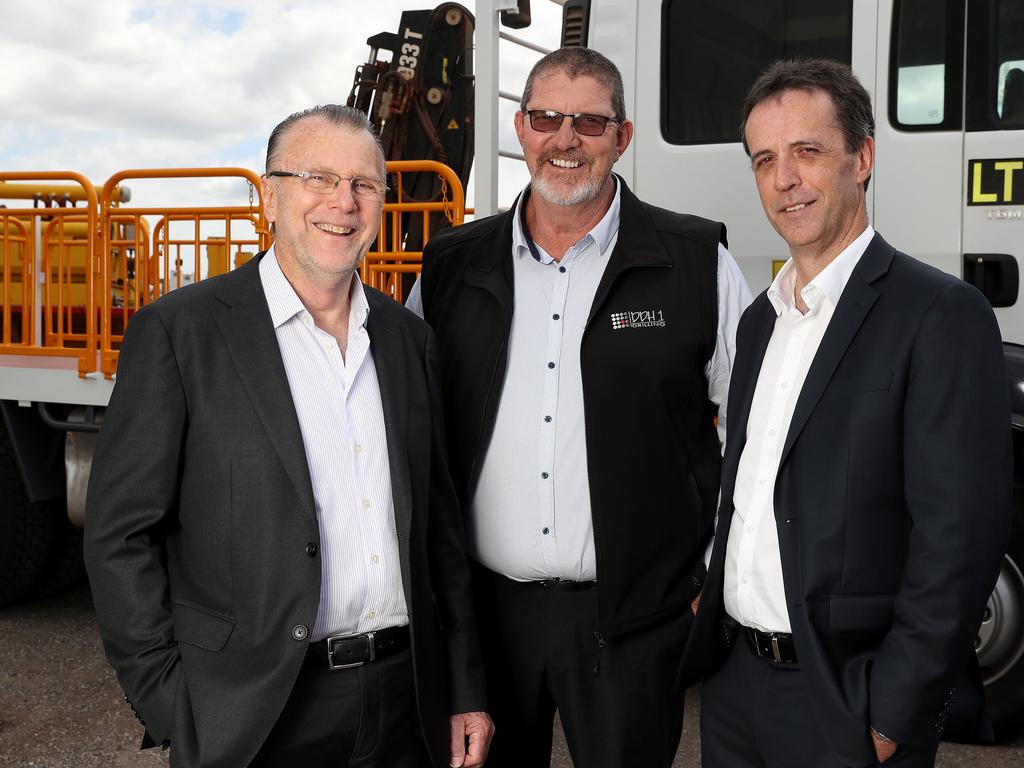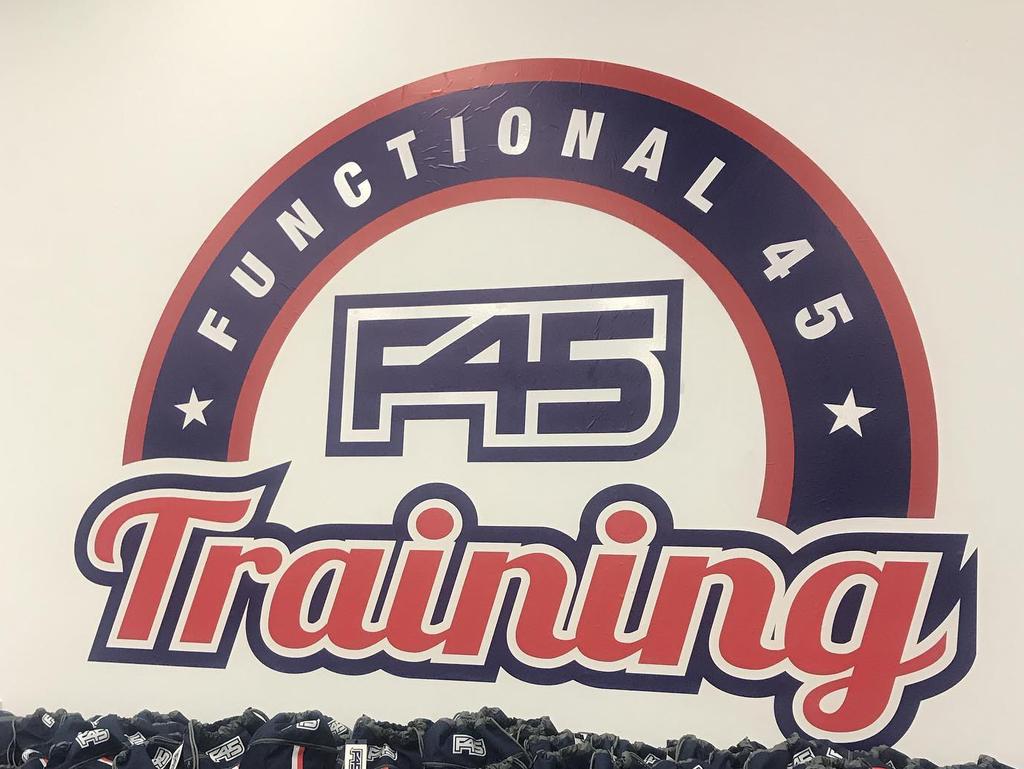Legislation changes likely to bump out decision timing for new projects says FMG CEO Elizabeth Gaines
Mining companies might need to factor in longer approval times when considering new projects, says FMG CEO Elizabeth Gaines.

Mining companies might need to factor in longer approval times when considering new projects, according to Fortescue Metals Group chief executive Elizabeth Gaines, as the industry reviews its approach to Indigenous heritage sites amid pressure from state governments and shareholder groups.
Speaking after Fortescue delivered another set of stellar quarterly production results, with the company receiving a quarterly average of more than $US100 a tonne for its iron ore for the first time since 2014, Ms Gaines said the company supported the WA government’s review of heritage laws to give Native Title holders more say in decision that impact important sites.
But the Fortescue boss told analysts the new laws would almost certainly push out approval timelines in the medium terms, warning the need to conduct more thorough heritage surveys and deeper consultation with traditional owners would put pressure on the resources of both mining companies and Native Title groups.
“We don’t see any risk to our short-term mine plans, but we’re sensitive to some of these developments and we want to maintain that level of consultation and sensitivity,” she said.
“The broader concern is that we have to take a longer-term view in terms of timing of approvals and take into account any potential delays, given there’s going to be a lot of survey work required more broadly across the Pilbara because the other iron ore operators have different types of agreements.
“And if they come under a similar form of legislation then we may find there’s significant pressure on what are relatively scarce resources to survey with the right people, with the traditional knowledge holders, so we’ve got to factor that into our planning.”
The WA government is still consulting on its new heritage protection legislation, and Ms Gaines told The Australian it would be difficult to predict the effect of the new laws until they were finalised.
“There have been a lot of submissions on the draft, from various industries not just from mining – pastoralists and graziers, property developers. So I don’t think we’ll know until that legislation is passed, and importantly until we understand the transition arrangements as well,” she said.
“But there needs to be a balance there, for the government, between making decisions that support important heritage matters but at the same time support broader public interest about jobs and growth.”
“Getting an appropriate balance is very important – but ensuring, as we’ve said, there is an equitable right of appeal and an increased voice for Aboriginal people in that process is important.”
Ms Gaines was speaking after Fortescue delivered its September quarter production results, as the cash keeps rolling in for the iron ore giant.
Fortescue received more than $US105 a tonne for its product in the September period, a lift of more than $US20 a tonne in the June quarter, and its highest quarterly average since 2014.
The Pilbara miner shipped 44.3 million tonnes in the September quarter, down from 47.3 million tonnes in the June period, but a record for its first quarter of the year – traditionally when iron ore majors conduct major maintenance shutdowns ahead of the Pilbara’s wet season.
Fortescue said its cash costs fell to $US12.74 a wet metric tonne, as realised prices soared on the back of strong demand from China’s steel mills.
Fortescue finished June with net cash of $US1bn after paying down a revolving credit facility worth $US1bn, finishing September with $US5.1bn cash on hand ahead of October’s bumper $US2.2bn dividend payment.
The company is well set to continue strong shareholder returns when it delivers its February half-year financial results, booking average revenue of $US105.77 a dry metric tonne for its product as the iron ore price surged, and more than 30 per cent up on the average price it received in the June quarter.
Ms Gaines said the company was on track to meet annual production targets of 175 to 180 million tonnes, with Fortescue’s new Eliwana mine still scheduled to deliver its first ore to the port by the end of the year.
Fortescue shares closed up 0.85 per cent, or 14c, to $16.62 on Thursday.





